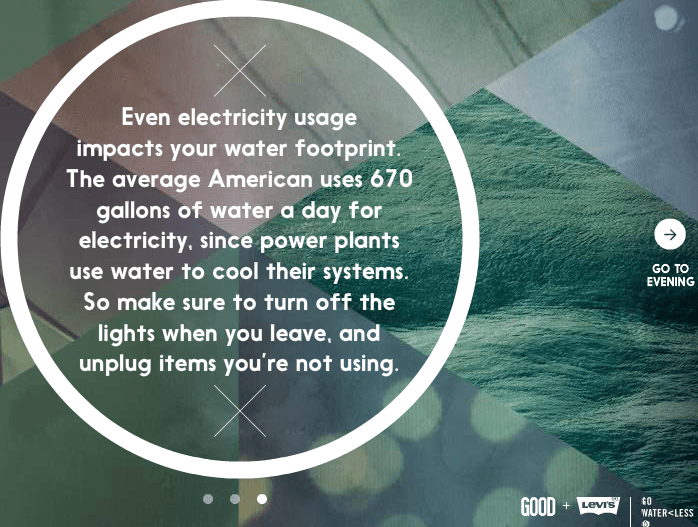-
 6 min. read
6 min. read
-
 Trevin Shirey
Trevin Shirey VP of Marketing
VP of Marketing
- Trevin serves as the VP of Marketing at WebFX. He has worked on over 450 marketing campaigns and has been building websites for over 25 years. His work has been featured by Search Engine Land, USA Today, Fast Company and Inc.
Content is king, and that’s a golden rule in Internet marketing. From site pages to email blasts and far beyond, the content you create represents your brand and engages your audience. Good content doesn’t just mean reading material for your site visitors, either — its biggest advantage is attracting leads.
And considering that 78% of B2B marketers say generating more leads is their biggest challenge, content has a lot of potential. But how can you attract sales leads with content? One of the most effective ways is to make your content interactive.
Basically, you engage your readership in a way that requires their participation. Then, they respond through pre-determined criteria that you’ve created, all of which are designed to narrow their intent and convince them to use your services. There are dozens of avenues at your disposal to interact with your customers, and that means a lot of potential lead generation. These are just a handful of the most successful interactive content formats.
Interactive infographics are perfect brand awareness pieces
Using an interactive infographic combines the eye-catching appeal of simple, bite-sized information with immersive, customer-focused participation.
The combination is a match made in heaven that can leave a positive, lasting impression on potential customers. You don’t even have to talk about your products for this kind of interactive content to generate leads. You can add a simple link or a soft call to action to round out what was otherwise an interesting and ad-free experience for the user.
An outstanding example of this is Your Daily Dose of Water, an interactive infographic spawned from a partnership between GOOD.is and Levi’s. The entire infographic features smooth animations, attractive text, small bits of information, and easy-to-see buttons that makes the whole experience seamless and pleasant. As you progress, you find out how much water you use each day based on your behavior, and a small Levi’s logo subtly hides in the bottom right corner.
 See it? It’s just a tiny link back to Levi’s homepage. Obviously, Levi’s has nothing to do with the infographic’s subject — they sell clothing, which is tangentially related to water usage, at best.
See it? It’s just a tiny link back to Levi’s homepage. Obviously, Levi’s has nothing to do with the infographic’s subject — they sell clothing, which is tangentially related to water usage, at best.
Plus, their soft, indirect ad methods are easily one of the most passive forms of advertising possible, not to mention a Downy-soft call to action. The point is that Levi’s has associated itself with hot-topic, helpful information that users find compelling. While they only include a soft-spoken logo, smaller companies can encourage conversions by including a contact form (or a link to one) on the last page of an interactive infographic.
Calculators let users work at their own pace
Calculators are some of the most common forms of interactive marketing.
They’re especially effective for any finance-related field — like marketing — since everyone can relate to money. You provide the expertise and knowledge behind the calculator’s mechanisms, and the customer fills in their information to get results tailored to their specifications. As an added bonus, calculators also create a dialogue between you and your potential customers right off the bat since they’re giving you information that you can use to help them.
On our site, we use quote calculators to help visitors get a better sense of what to expect from our services.  A message at the end of the calculation asks (but doesn’t require) users to provide contact information so that they can continue moving down the sales funnel. And after that, they’re talking to us!
A message at the end of the calculation asks (but doesn’t require) users to provide contact information so that they can continue moving down the sales funnel. And after that, they’re talking to us!
Like interactive infographics, calculators don’t need much branding or blaring calls to action. Their primary function is to serve the user reliably, and if they can do that, then you’ve already shown a potential customer that you want to help. A contact form at the end of a calculator can do wonders for driving new leads to your business.
Similar to infographics, calculators can attract quality sales leads since users who complete the whole calculation are likely interested in what you’re offering.
Quizzes tell users what they need based on your criteria
Everyone loves quizzes, and they’re not just for Buzzfeed anymore. You can utilize quizzes similarly to interactive infographics by asking questions that correspond to pre-determined criteria. At the end of the quiz, you can present users with a contact form, a suggestion, or resources where they can learn more, all of which give them a reason to stay on your site and gradually encourage them to convert.
In addition, quizzes help you target what a potential client’s needs could be before they even contact you. Asking a small number of leading questions related to your services can help you pinpoint exactly where your business stands in that client’s plans. If you add a contact form at the end of the quiz, you can even prepare a specialized pitch to each user and appeal to their individual needs.
The online athletic clothing retailer Fabletics uses quizzes to drive membership conversions. Their quiz is all about a site visitor’s preferences as they’re exercising, allowing users to pick the workout environments they like, the regimens they choose, and much more. Plus, they give users the chance to include personal information like birthdays and household income to better target products to their customers — but that information is completely optional, so users don’t have to include it if it makes them uncomfortable.
Still, their smartest business move hits site visitors right off the bat.  A half-off deal on a quiz about your workout preferences? Fabletics couldn’t have hit the nail more on the head.
A half-off deal on a quiz about your workout preferences? Fabletics couldn’t have hit the nail more on the head.
Ultimately, their goal is to sell product. But a 50% off deal for someone’s name and contact info ensures people will come back. As a bonus, quizzes also happen to be tremendously successful on social media.
Granted, most of them are targeted toward non-business demographics, but you can still design a quiz that draws the attention of potential customers and move them through the sales funnel. Everyone likes information — especially when it’s tailored to them.
Conclusion
These are only a few types of interactive content that generate sales leads. But all that means is that the sky’s the limit in terms of potential.
You have a countless number of options at your disposal to draw the attention of any site visitor and guide them through the sales funnel — the three above are just some of the best! If you want to learn more about lead generation strategies, feel free to contact one of our lead generation consultants at 888-601-5359!
-
 Trevin serves as the VP of Marketing at WebFX. He has worked on over 450 marketing campaigns and has been building websites for over 25 years. His work has been featured by Search Engine Land, USA Today, Fast Company and Inc.
Trevin serves as the VP of Marketing at WebFX. He has worked on over 450 marketing campaigns and has been building websites for over 25 years. His work has been featured by Search Engine Land, USA Today, Fast Company and Inc. -

WebFX is a full-service marketing agency with 1,100+ client reviews and a 4.9-star rating on Clutch! Find out how our expert team and revenue-accelerating tech can drive results for you! Learn more
Try our free Marketing Calculator
Craft a tailored online marketing strategy! Utilize our free Internet marketing calculator for a custom plan based on your location, reach, timeframe, and budget.
Plan Your Marketing Budget

Looking for More?
Get expert ideas, industry updates, case studies, and more straight to your inbox to help you level up and get ahead.
"*" indicates required fields
Try our free Marketing Calculator
Craft a tailored online marketing strategy! Utilize our free Internet marketing calculator for a custom plan based on your location, reach, timeframe, and budget.
Plan Your Marketing Budget





